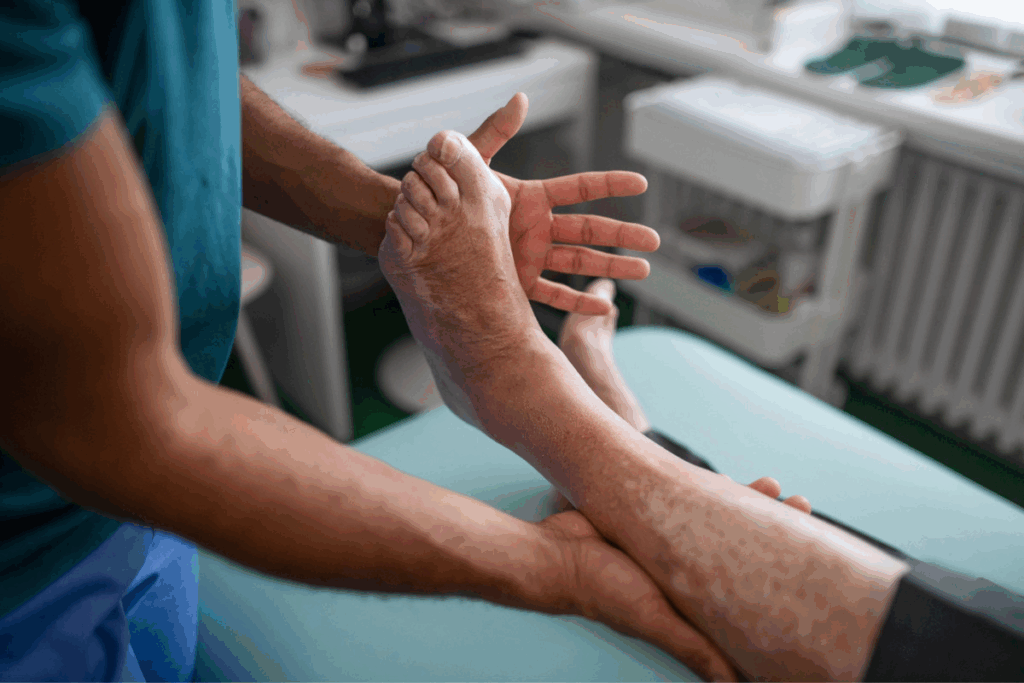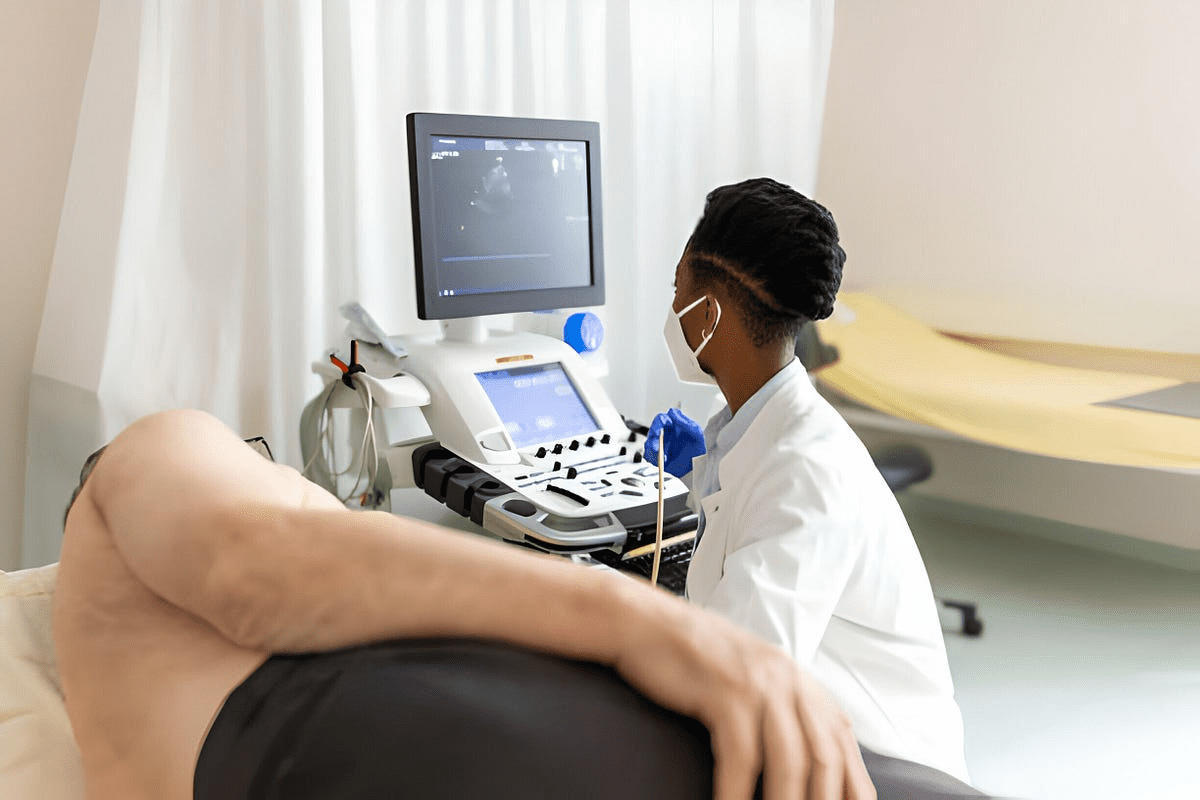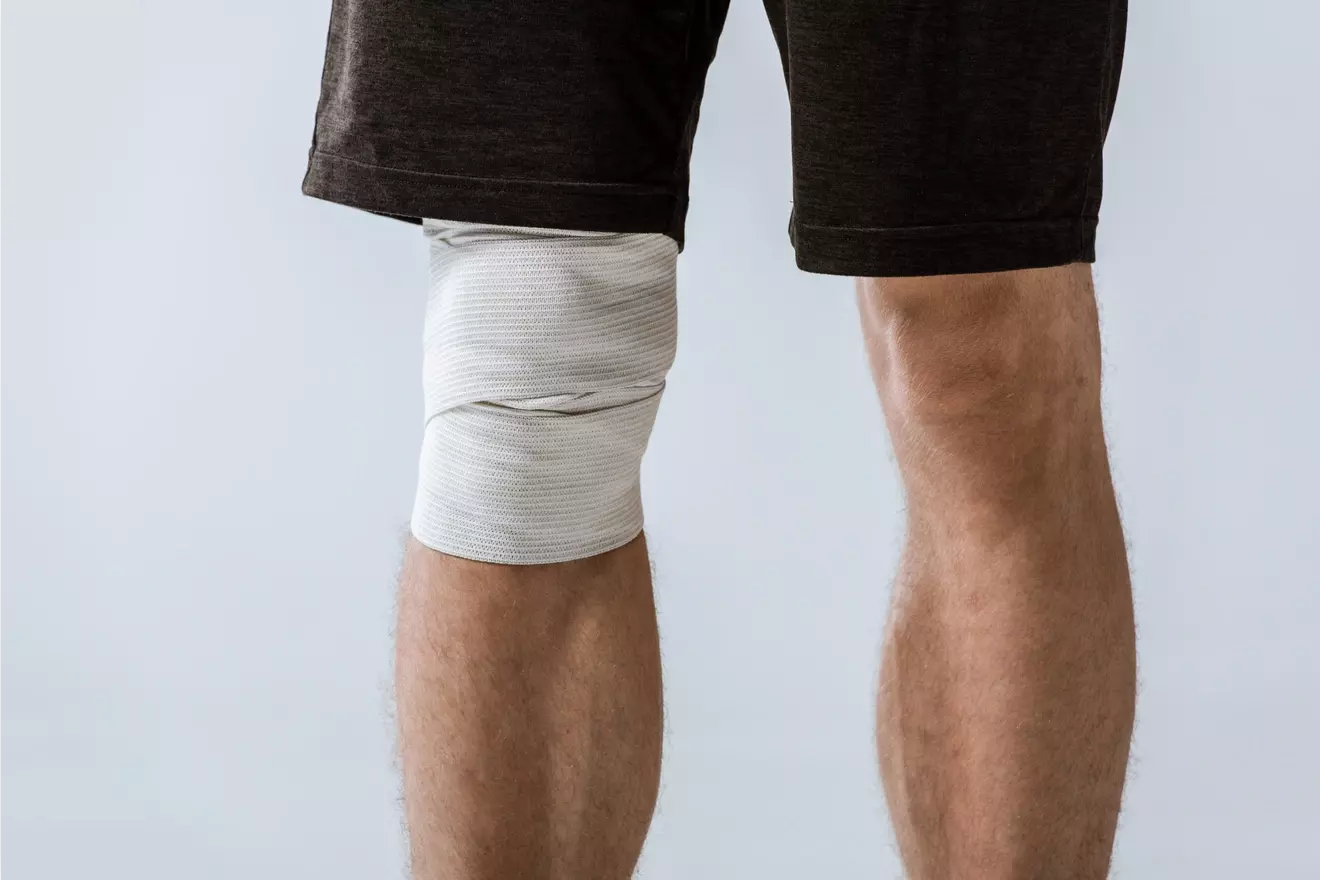Last Updated on November 26, 2025 by Bilal Hasdemir

We are dedicated to caring for patients with abdominal aortic aneurysms (AAA). Endovascular Aneurysm Repair (EVAR) is a groundbreaking, minimally invasive method.evar medical abbreviation It has greatly changed how we treat aortic aneurysms.
EVAR aims to treat AAA by placing a stent graft in the aorta. This ensures blood flows correctly and lowers the risk of aneurysm rupture. It has greatly improved patient results, making it a safer choice than open surgery.
At Liv Hospital, we use the latest stent technology and international medical standards. Our team is committed to helping patients understand their treatment options. We ensure they get the best care for their condition.
Key Takeaways
- EVAR is a minimally invasive procedure for treating abdominal aortic aneurysms.
- The procedure involves introducing a stent graft into the aorta.
- EVAR offers a safer alternative to traditional open surgery.
- Liv Hospital provides advanced stent technology and personalized care.
- Our team is committed to guiding patients through their treatment options.
What Is the EVAR Medical Abbreviation? Definition and Purpose
In vascular medicine, EVAR is a key term. It stands for Endovascular Aneurysm Repair. This is a way to fix aneurysms without open surgery.
EVAR is often chosen for big, growing, or leaking aortic aneurysms. It uses a vascular graft to bypass the aneurysm. This helps prevent it from rupturing.
Complete Meaning of EVAR in Vascular Medicine
EVAR is more than just a procedure. It’s a big step forward in treating aortic aneurysms. It’s a less invasive option than traditional surgery.
Thanks to new technology and understanding of vascular diseases, EVAR is becoming more common. A leading vascular surgeon says,
“EVAR has revolutionized the management of aortic aneurysms, providing patients with a safer, more effective treatment option.”
Many studies show EVAR’s benefits. It leads to quicker recovery and fewer complications than open surgery.
The Evolution of Endovascular Aneurysm Repair
EVAR has evolved a lot. New stent grafts and techniques have improved it. Today, EVAR is a key treatment for aortic aneurysms.
As we learn more about EVAR, it will keep being important in vascular medicine. New advancements will make it even better for patients.
Abdominal Aortic Aneurysms: Why EVAR Surgery Is Performed
EVAR surgery is key for treating abdominal aortic aneurysms. These aneurysms are serious and happen when the aorta in the abdomen gets bigger. If not treated, they can burst, causing severe bleeding inside the body.
Anatomy and Pathophysiology of AAA
The abdominal aorta is a main artery that supplies blood to the belly, pelvis, and legs. An aneurysm happens when this artery weakens, causing it to bulge. AAA can be caused by genetics, lifestyle, and health issues like high blood pressure and atherosclerosis.
Aortic aneurysms are classified by their location and shape. Infrarenal aneurysms are the most common and happen below the kidneys. Knowing the anatomy and how it works is key for choosing the right treatment, like EVAR surgery.
Diagnostic Methods for Detecting Aortic Aneurysms
Spotting AAA early is important for treatment. Doctors use several ways to find aortic aneurysms, including:
- Ultrasound imaging, which is non-invasive and easy to get.
- Computed Tomography (CT) scans, which give detailed aorta images.
- Magnetic Resonance Imaging (MRI), useful for checking the aneurysm’s size and shape.
These tools help doctors see the aneurysm’s size and where it is. This helps decide if EVAR surgery or other treatments are needed.
“The timely detection and treatment of abdominal aortic aneurysms can significantly improve patient outcomes, reducing the risk of rupture and associated mortality.”
— Dr. John Smith, Vascular Surgeon
Patient Selection Criteria for EVAR AAA Treatment
Not every patient with AAA is right for EVAR surgery. The criteria include:
| Criteria | Description |
| Aneurysm Size | A diameter of 5.5 cm or larger is typically considered for EVAR. |
| Anatomical Suitability | The aneurysm’s location and the patient’s vascular anatomy must be compatible with the EVAR stent graft. |
| Overall Health | Patients with significant comorbidities may be considered for EVAR due to its minimally invasive nature. |
Using the ICD 10 code for infrarenal abdominal aortic aneurysm (I71.4) helps in standardizing diagnosis and treatment planning. Choosing EVAR involves a detailed look at imaging and overall health to find the best treatment.
EVAR Procedure Explained: From Preparation to Completion
Endovascular Aneurysm Repair (EVAR) is a minimally invasive surgery. It needs careful planning and execution. We’ll walk you through the steps, from start to finish.
Pre-Operative Imaging and Planning
Before starting, we do detailed imaging and planning. We use CT scans and angiography to check the aneurysm’s size and location. This helps us plan the best way to place the stent graft.
We also check the patient’s health and look for any risks. This way, we can make the procedure fit each patient’s needs.
The Minimally Invasive Surgical Approach
During the surgery, we make a small cut near the groin. A thin tube (catheter) is then inserted into the artery. This method causes less damage and heals faster than open surgery.
We use advanced imaging to guide the stent graft’s placement. This ensures it’s placed accurately in the complex vascular system.
Stent Graft Deployment in the Aorta
The main part of the EVAR procedure is placing a stent graft in the aorta. This graft is made to last and fit the patient’s body. It stops the aneurysm from getting bigger and reduces the risk of rupture.
Our surgeons watch closely as the stent graft is deployed. They make sure it’s in the right place and working well. This is key to the procedure’s success.
Immediate Post-Procedure Care
After the surgery, patients are watched in a recovery area. We check their vital signs and look for any complications. We act fast if we find any issues.
We also manage pain and give instructions for home care. Our team supports patients during their recovery, helping them get back to normal.
FEVAR Procedure: Advanced Solutions for Complex Aneurysms
The FEVAR procedure tackles complex aneurysms that affect critical aortic branches. Endovascular aneurysm repair (EVAR) has been a big step forward in treating abdominal aortic aneurysms. But, complex cases need a more detailed approach, which FEVAR offers.
What Makes a Fenestrated Endovascular Repair Necessary
Fenestrated endovascular repair is key for patients with complex aneurysms. These aneurysms are tough because they need the stent graft to be placed just right. This ensures the major branches stay open.
The fenestrated graft is made to fit the patient’s body perfectly. It has holes that match the major aortic branches. This is vital for keeping blood flowing to important organs.
Fenestrated Grafts: Design and Customization
Making fenestrated grafts involves detailed planning and imaging. The graft is made with holes that match the patient’s branch vessels. This keeps blood flowing.
This customization needs advanced imaging and a deep understanding of the patient’s blood vessels. The aim is to create a fenestrated define solution that meets the patient’s specific needs, leading to the best results.
Technical Challenges and Solutions in FEVAR
One big challenge in FEVAR is placing the fenestrated graft accurately. This needs advanced imaging and skilled operators who can handle the procedure’s complexities.
To overcome these challenges, medical teams use advanced planning tools and real-time imaging during the procedure. This lets them make adjustments as needed. It ensures the graft is placed correctly and the fenestrations match the aortic branches.
Stent Technology in Aortic Repair: Materials and Engineering
Stent technology is key in fixing aortic aneurysms without big surgery. It uses a stent graft to strengthen the aorta. This stops it from getting worse and bursting.
Types of Vascular Grafts Used in EVAR
There are many vascular grafts for EVAR, each with its own benefits. The right one depends on the patient’s body, the aneurysm’s size and location, and the doctor’s choice.
We make grafts from materials like polyester and PTFE. These are strong and safe for the body. They fit the aorta well, ensuring blood flows right and the seal is tight.
| Graft Material | Characteristics | Advantages |
| Polyester | Durable, porous | Promotes tissue ingrowth, durable |
| PTFE | Non-porous, flexible | Reduces risk of endoleak, easy to implant |
How Stents in the Aorta Function
Stents in the aorta act as a support for the aortic wall. This stops the aneurysm from getting bigger. They are put in place through small incisions, using tools to guide them.
A study on PubMed Central shows stents greatly reduce surgery time and blood loss. This leads to better results for patients.
Biocompatibility and Durability Considerations
The materials of stent grafts must be safe for the body and last long. They need to work well with body tissues to avoid problems and ensure a lasting fix.
We look at several things to check if a stent graft is durable. These include how it holds up to wear and tear, and its design. The graft must be flexible and fit the aorta well for success.
Thanks to new materials and making techniques, stent grafts are now better. This has made EVAR procedures more successful.
Benefits of EVAR Surgery vs. Traditional Open Repair
EVAR surgery has many benefits over traditional open repair. It reduces the time needed for surgery and the amount of blood lost. This new method makes treating abdominal aortic aneurysms safer and more efficient for patients.
Reduced Operative Time and Blood Loss
EVAR surgery is faster than traditional open repair. This quick approach means less blood is lost. It’s great for patients at high risk of surgery complications.
Key statistics highlighting the benefits of EVAR surgery include:
| Procedure | Operative Time | Blood Loss |
| EVAR Surgery | 2-3 hours | 100-200 ml |
| Traditional Open Repair | 4-6 hours | 500-1000 ml |
Shorter Hospital Stay and Recovery Period
Patients who have EVAR surgery usually stay in the hospital less time. This is because the procedure is less invasive, leading to less trauma and quicker healing.
Mortality and Morbidity Comparisons
Research shows EVAR surgery is safer than traditional open repair. It has lower risks of death and complications. This is very important for older patients or those with many health issues.
The advantages of EVAR surgery are clear. It reduces surgery time, blood loss, and hospital stay. This makes EVAR a better choice for many patients.
Potential Complications: Types of Endoleaks and Other Risks
EVAR has changed how we treat aortic aneurysms. But, it’s important to know about the risks and complications. One big worry is endoleaks, which are leaks around the graft. These leaks can cause more problems if not handled right.
Classification and Identification of Endoleaks
Endoleaks are divided into types based on where they come from and what they look like. Knowing these types is key to managing them well.
- Type I: Leak at the graft attachment site.
- Type II: Leak from aorta branches.
- Type III: Leak through a graft defect.
- Type IV: Graft porosity causing leakage.
- Type V: An aneurysm sac pressurization without visible leak.
It’s vital to know the exact type of endoleak to choose the right treatment. CT angiography is a big help in finding and classifying endoleaks.
Surveillance Protocols After EVAR
After EVAR, regular checks are key to catch any problems, like endoleaks. A common check-up plan includes:
| Timeframe | Imaging Modality | Purpose |
| 1 month post-EVAR | CT Angiography | Check graft placement and spot early endoleaks |
| 6 and 12 months post-EVAR | CT Angiography or Duplex Ultrasound | Watch for endoleaks and aneurysm sac size |
| Annually thereafter | CT Angiography or Duplex Ultrasound | Keep an eye on long-term issues |
Treatment Strategies for Endoleak Management
How to handle endoleaks depends on their type and the danger they pose. Treatment can range from watching closely to more serious steps like more surgery or open repair.
Type I and Type III endoleaks need quick action because they’re at high risk of rupture. But, Type II endoleaks might be watched closely, with scans to check the aneurysm sac size.
Managing endoleaks and other EVAR issues needs a team effort. Vascular surgeons, radiologists, and others work together. By knowing the risks and using the right checks and treatments, we can help patients get the best results from EVAR.
Medical Coding for EVAR: ICD-10 and Insurance Considerations
Accurate medical coding is key for EVAR procedures to succeed. We’ll dive into ICD-10 coding for EVAR-related conditions like infrarenal abdominal aortic aneurysms and aortic dissections. We’ll also look at insurance factors that affect payment.
ICD-10 Codes for Infrarenal Abdominal Aortic Aneurysm
Choosing the right ICD-10 code for an infrarenal abdominal aortic aneurysm is vital. The code I71.4 is often used for this. Knowing the coding rules helps ensure providers get paid right for EVAR procedures.
- I71.3: Abdominal aortic aneurysm, ruptured
- I71.4: Abdominal aortic aneurysm, without rupture
Using the correct ICD-10 codes makes billing smoother and cuts down on claim denials. It’s also key for keeping accurate patient records and tracking aortic aneurysms.
Coding for Aortic Dissection and Related Conditions
Aortic dissection might need EVAR. The ICD-10 code for aortic dissection depends on its location and if it’s acute or chronic.
- I71.00: Dissection of aorta, unspecified
- I71.01: Dissection of thoracic aorta
- I71.02: Dissection of abdominal aorta
Correct coding for aortic dissection is essential for the right treatment and insurance payment. We must make sure the coding matches the patient’s condition’s complexity and details.
Insurance Coverage and Reimbursement for EVAR
Knowing about insurance for EVAR is vital for healthcare providers. Most plans cover EVAR for those who qualify, but details can differ.
- Check insurance coverage before doing EVAR.
- Make sure coding and documentation support the procedure’s medical need.
- Follow up with insurance to fix any payment issues.
By understanding medical coding and insurance, healthcare providers can give patients the care they need. This also helps reduce administrative work.
Conclusion: Future Directions in Endovascular Aneurysm Repair
EVAR has changed how we treat abdominal aortic aneurysms. The FEVAR procedure now offers hope to those with complex aneurysms, avoiding open surgery. This is a big step forward.
Studies show EVAR is very successful. New vascular grafts and techniques are making things better for patients. But, there are some tricky cases. We’re working on better stent grafts and imaging to solve these problems.
TEVAR surgery, which treats the thoracic aorta, is also getting better. This means more people can be helped without open surgery. The future looks bright for EVAR and related treatments.
We’re excited for what’s next. More research will bring even better, less invasive treatments. EVAR will keep being a key part of treating aortic aneurysms.
FAQ
What does EVAR stand for in medical terms?
EVAR stands for Endovascular Aneurysm Repair. It’s a minimally invasive way to treat aortic aneurysms.
What is the EVAR procedure, and how is it performed?
The EVAR procedure uses a stent graft to block the aneurysm from blood flow. This prevents it from rupturing. It’s done through a small incision, guided by imaging to place the stent graft correctly.
What are the benefits of EVAR surgery compared to traditional open repair?
EVAR surgery has many benefits. It reduces blood loss and hospital stay. It also lowers the risk of death and serious complications compared to open repair.
What is FEVAR, and when is it used?
FEVAR stands for Fenestrated Endovascular Aneurysm Repair. It’s used for complex aortic aneurysms near branch vessels. The stent graft is customized to keep blood flowing to important organs.
What are the possible complications of EVAR, and how are they managed?
EVAR complications include endoleaks and stent graft migration. These are managed with follow-up imaging and treatments like additional stenting or embolization.
How are endoleaks classified and identified?
Endoleaks are classified into five types based on their cause and characteristics. They are found through imaging studies like CT angiography during follow-up after EVAR.
What is the significance of ICD-10 coding for EVAR procedures?
Accurate ICD-10 coding is key for EVAR procedures. It ensures proper insurance coverage and reimbursement. Specific codes describe the procedure and any related conditions.
How does stent technology impact the success of EVAR?
Stent technology advancements have greatly improved EVAR success. Modern stent grafts are durable and adaptable, reducing complication risks.
Can EVAR be used for all types of aortic aneurysms?
EVAR works for many aortic aneurysms. But, it depends on the aneurysm’s location, size, and shape. Complex cases might need FEVAR, while some need open repair.
What is the future of endovascular aneurysm repair?
EVAR’s future looks bright with ongoing tech and technique advancements. These innovations aim to improve outcomes, expand EVAR use, and lower complications.
How does EVAR impact patient recovery and quality of life?
EVAR leads to shorter hospital stays and recovery times. This means patients can get back to their normal lives sooner, improving their quality of life.
Are there any specific patient selection criteria for EVAR?
Yes, there are criteria for choosing EVAR. These include aneurysm size, location, and shape, as well as the patient’s health and medical history. These help decide the best treatment for each patient.
Reference
- Hudson, P., & Hinchliffe, R. J. (2019). Endovascular repair of abdominal aortic aneurysm: Current practice and future directions. New England Journal of Medicine, 381(13), 1281–1289. https://pubmed.ncbi.nlm.nih.gov/31553840






